Impact Damage Evaluation in Composite Structures Based on Fusion of Results of Ultrasonic Testing and X-ray Computed Tomography
Abstract
:1. Introduction
2. Specimens and Experiments
2.1. Specimens Preparation and Introduction of Impact Damage
2.2. Non-Destructive Testing of Specimens
3. Fusion of NDT Results
3.1. Fusion Algorithm
3.2. Results of Fusion
3.3. Analysis of Damage Mechanisms and Their Detectability
3.4. Evaluation of Estimation Accuracy of BVID Based on UT
4. Conclusions
Author Contributions
Funding
Acknowledgments
Conflicts of Interest
Appendix A
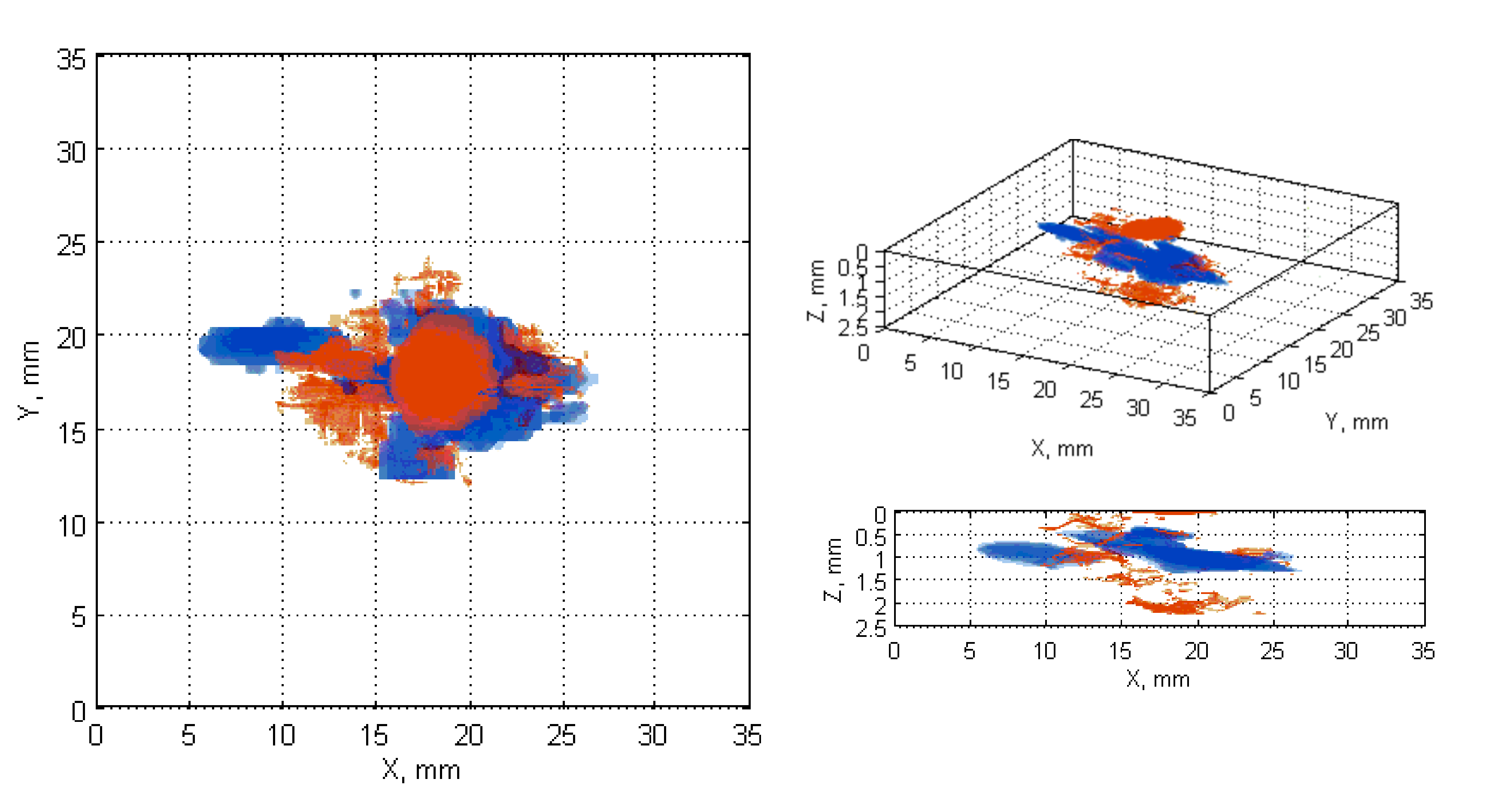
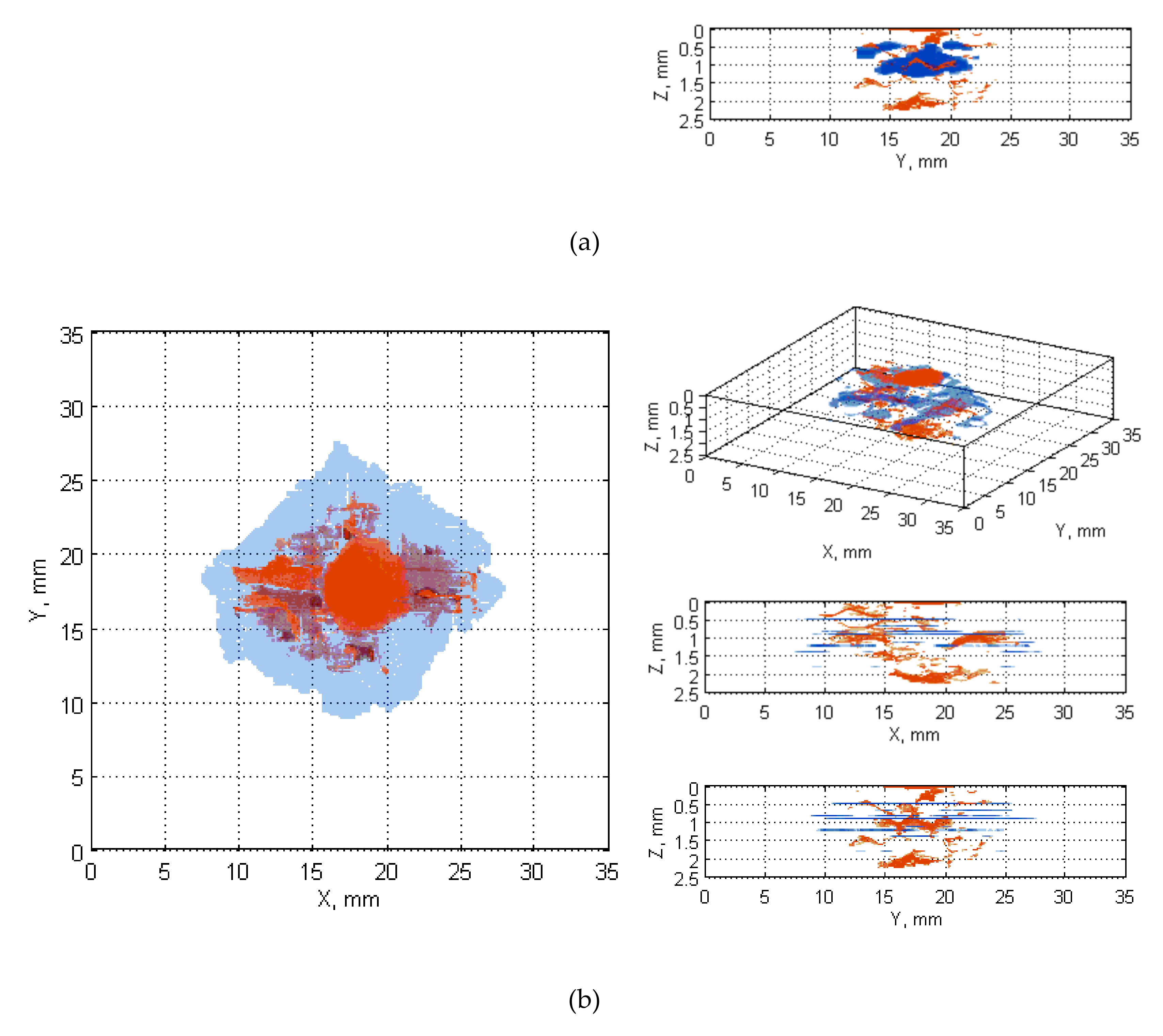

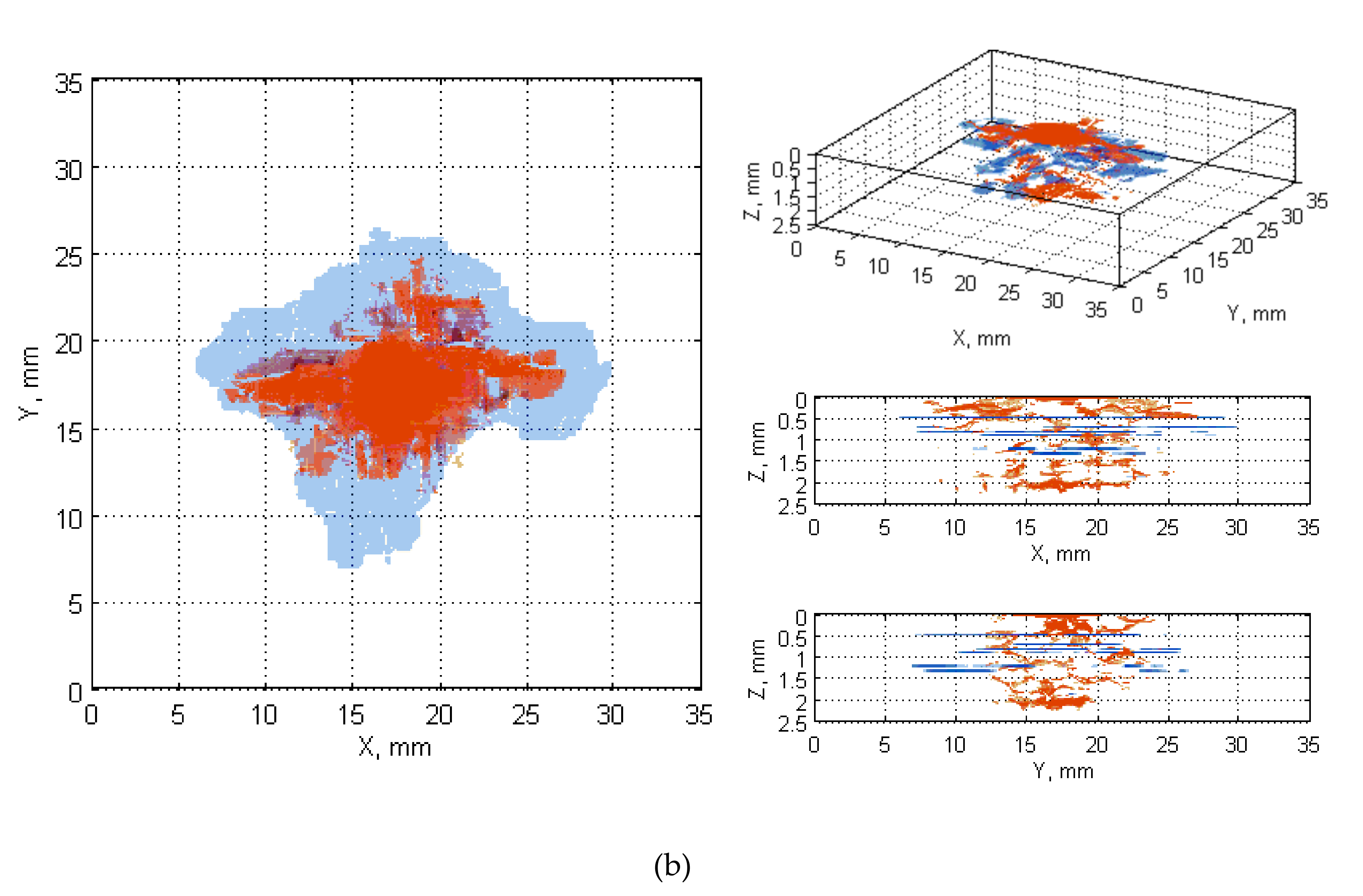

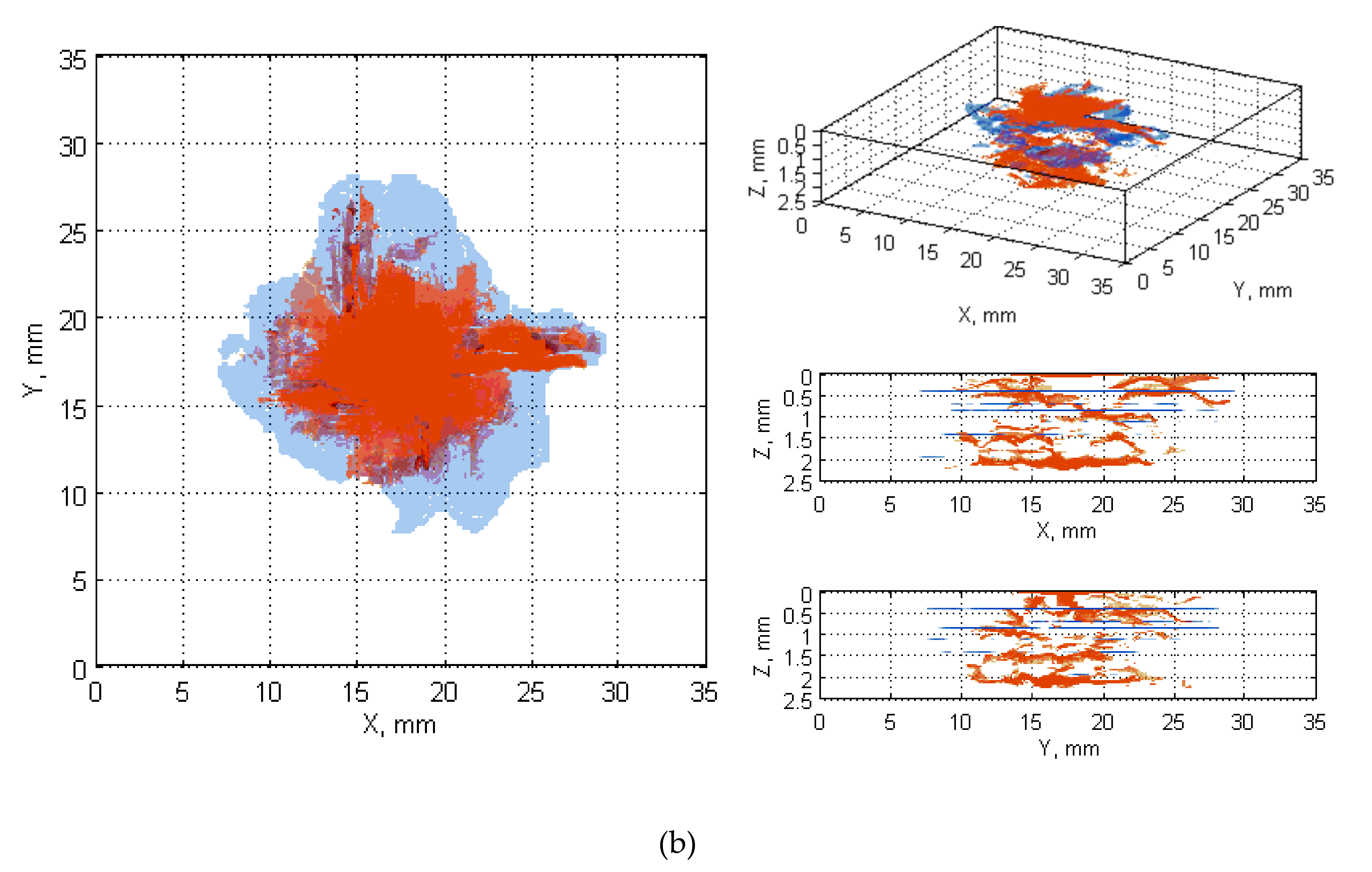

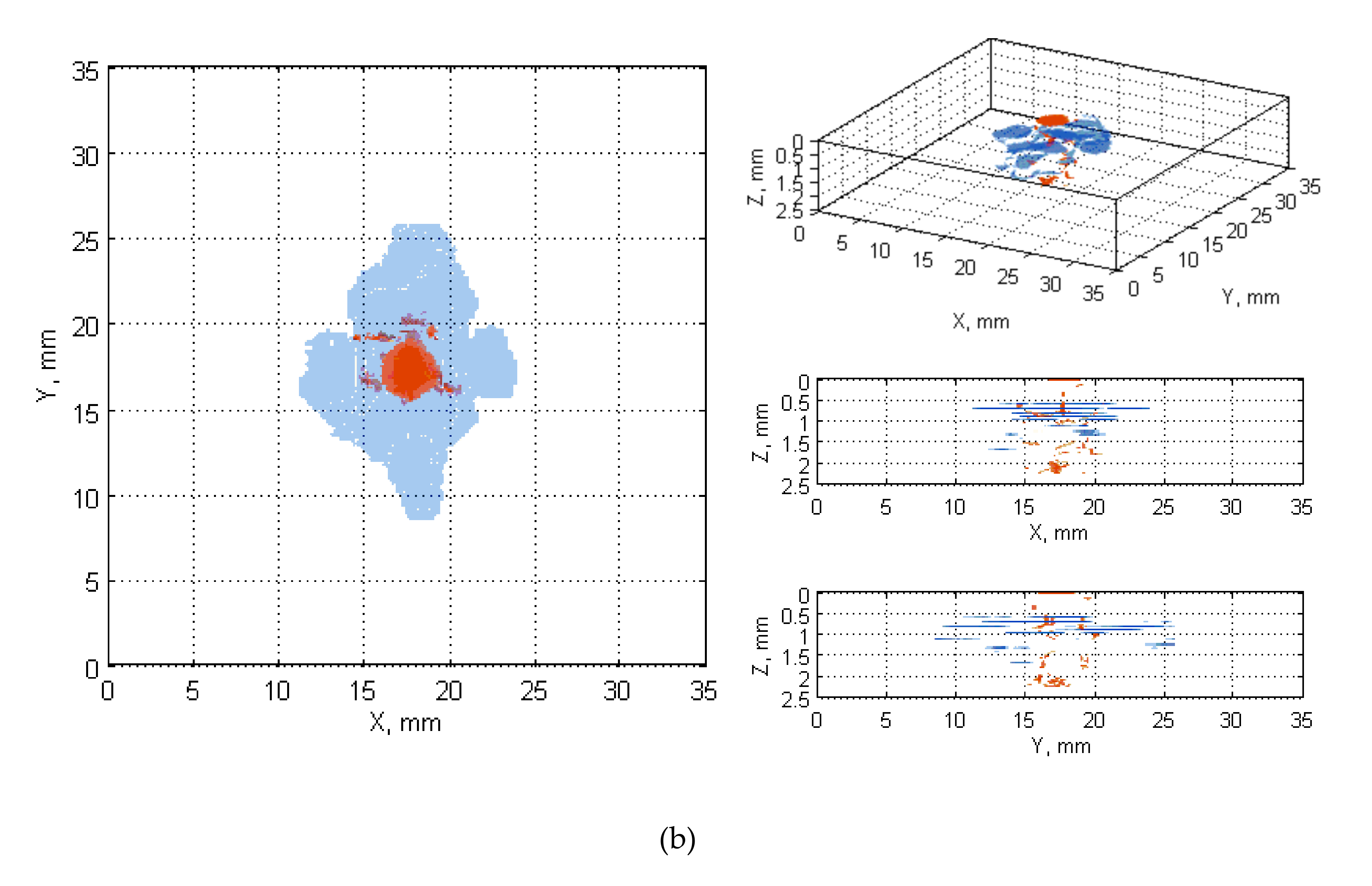
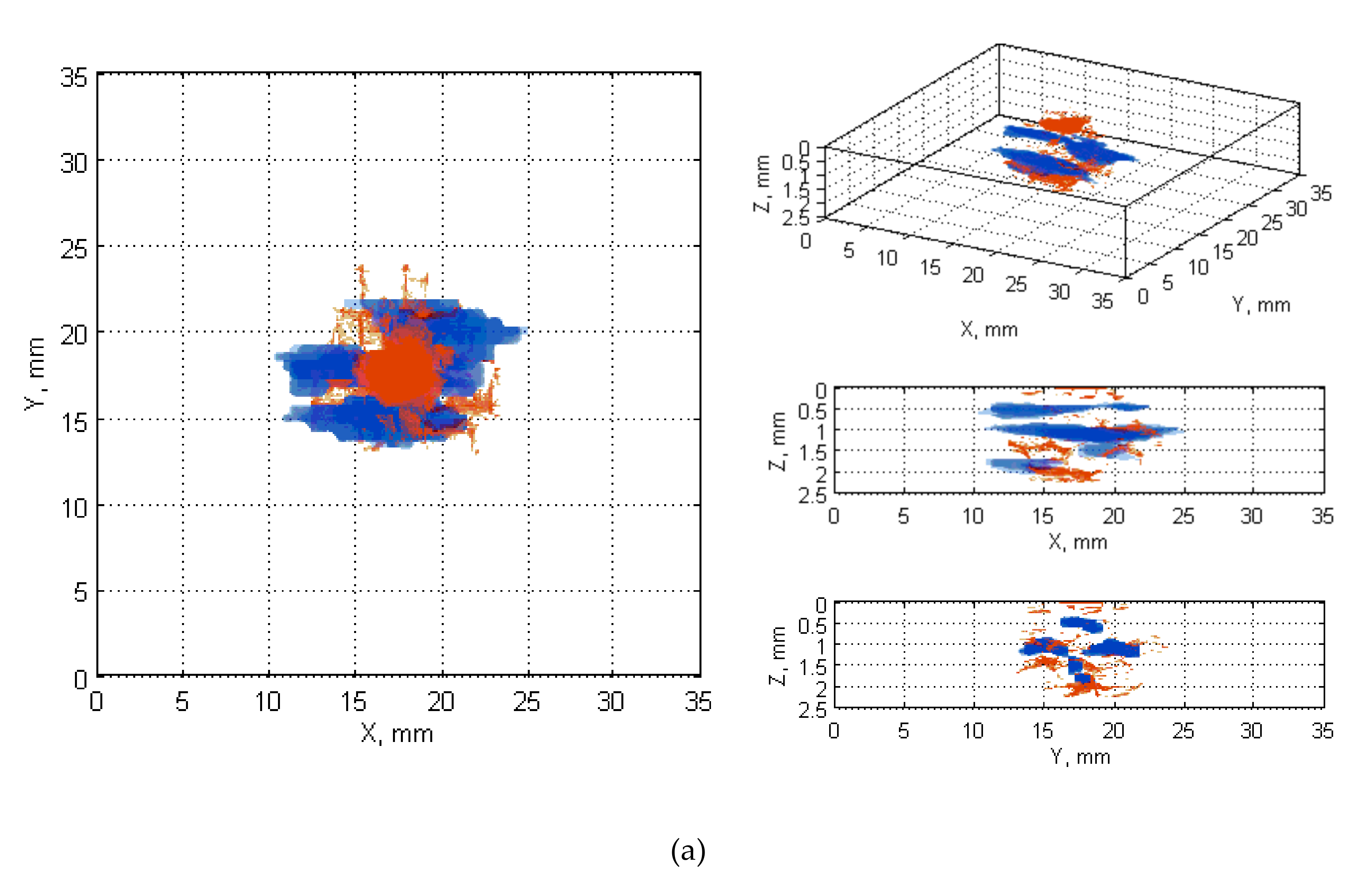
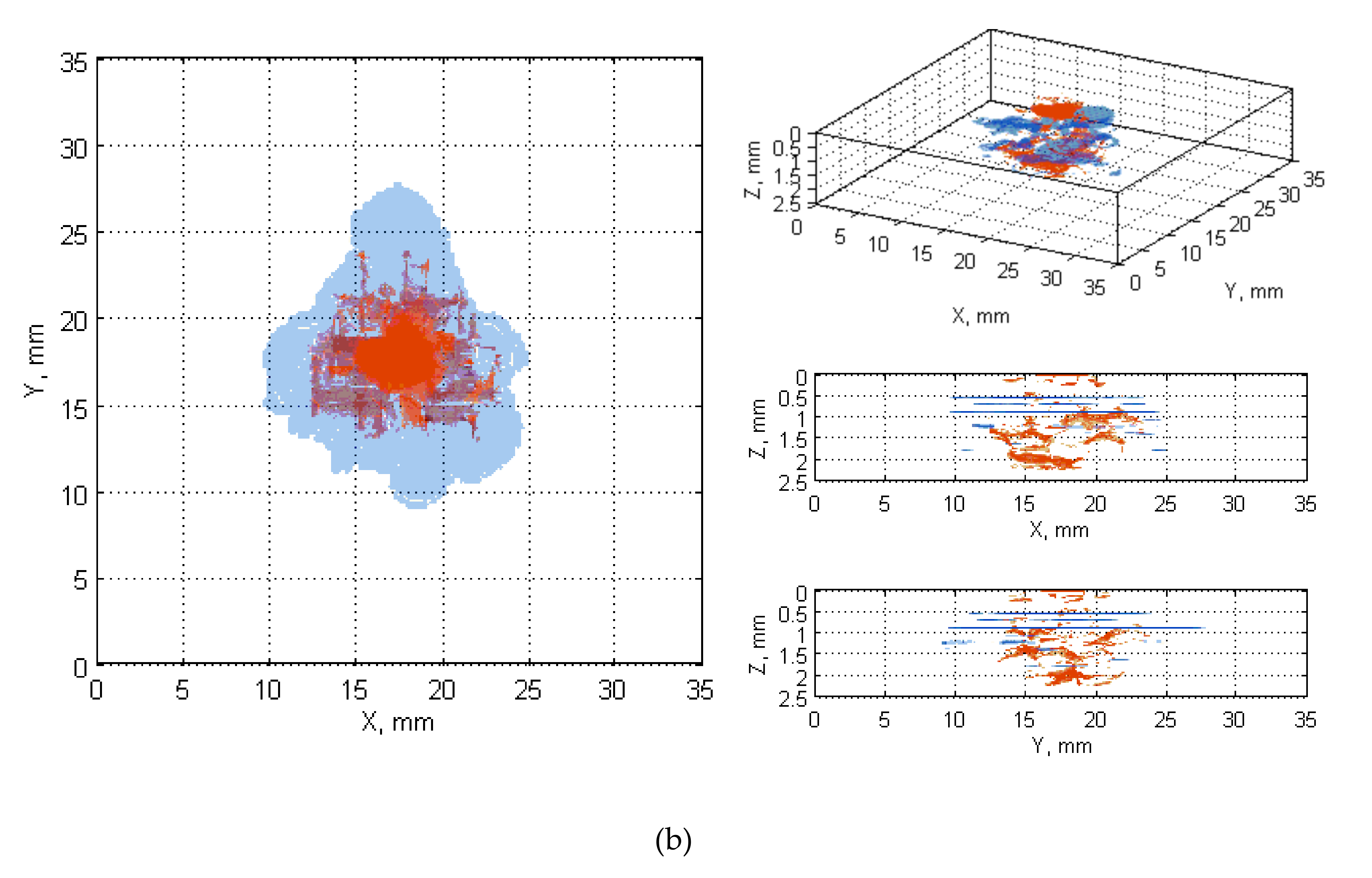
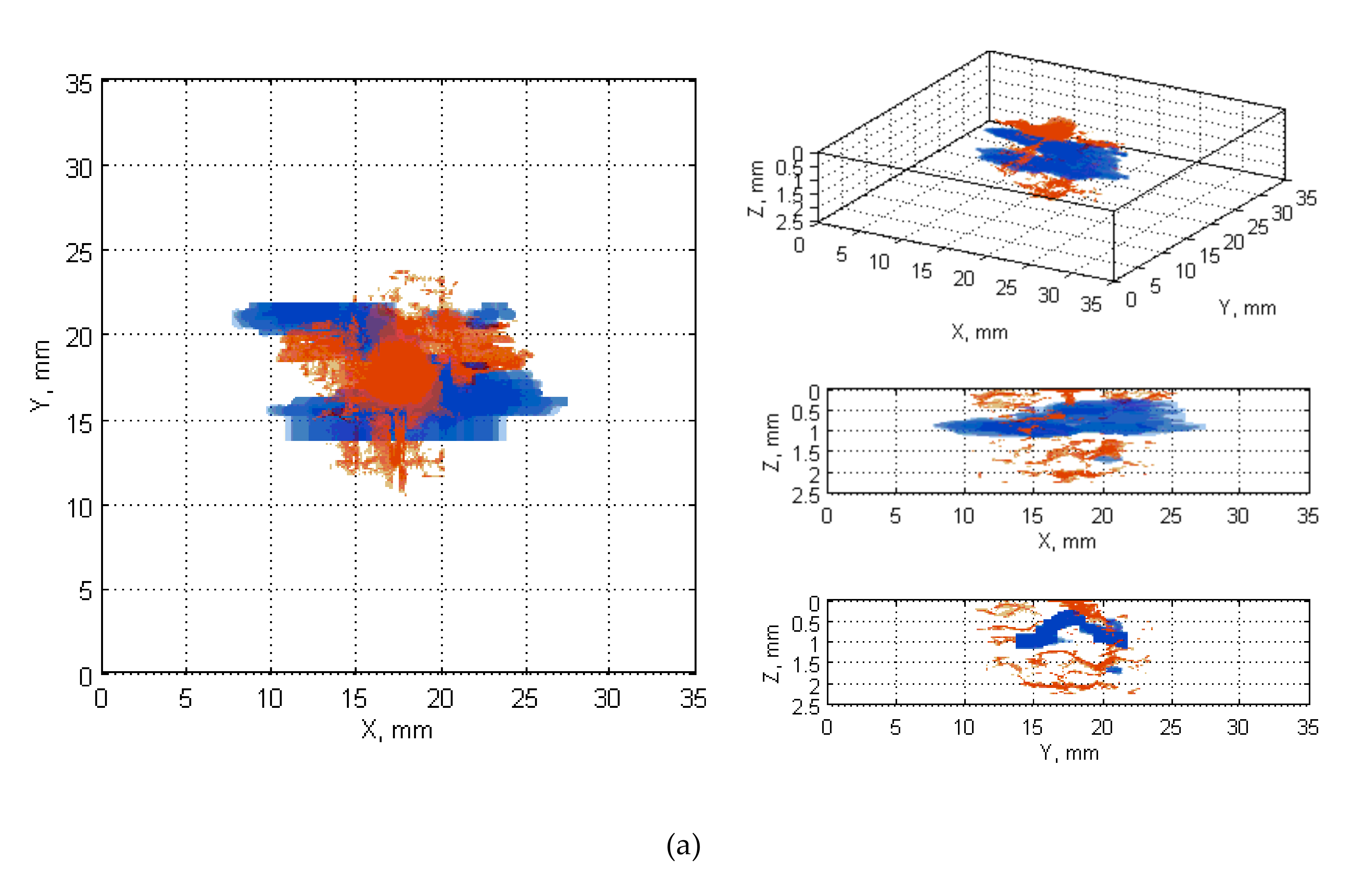
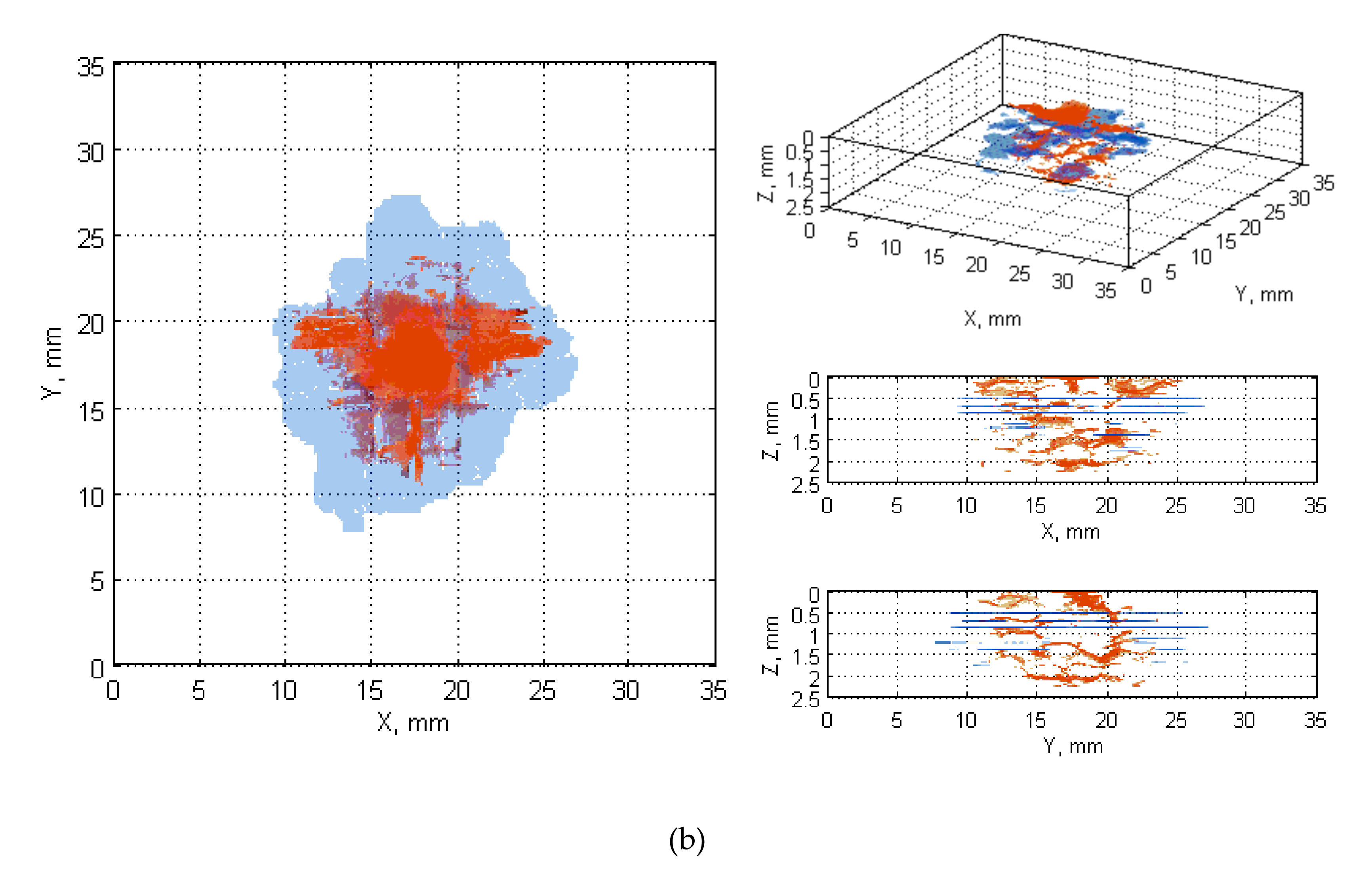













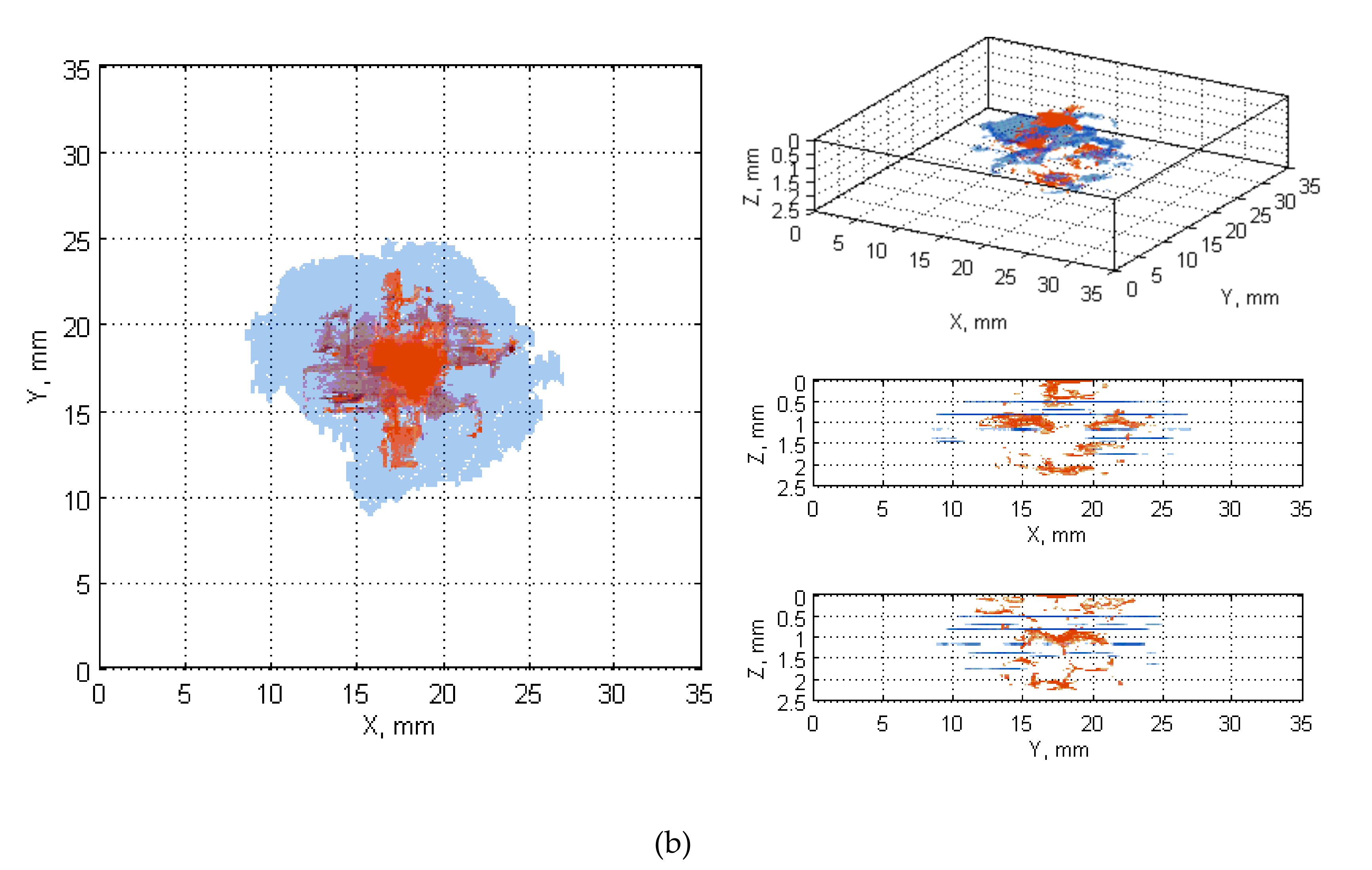

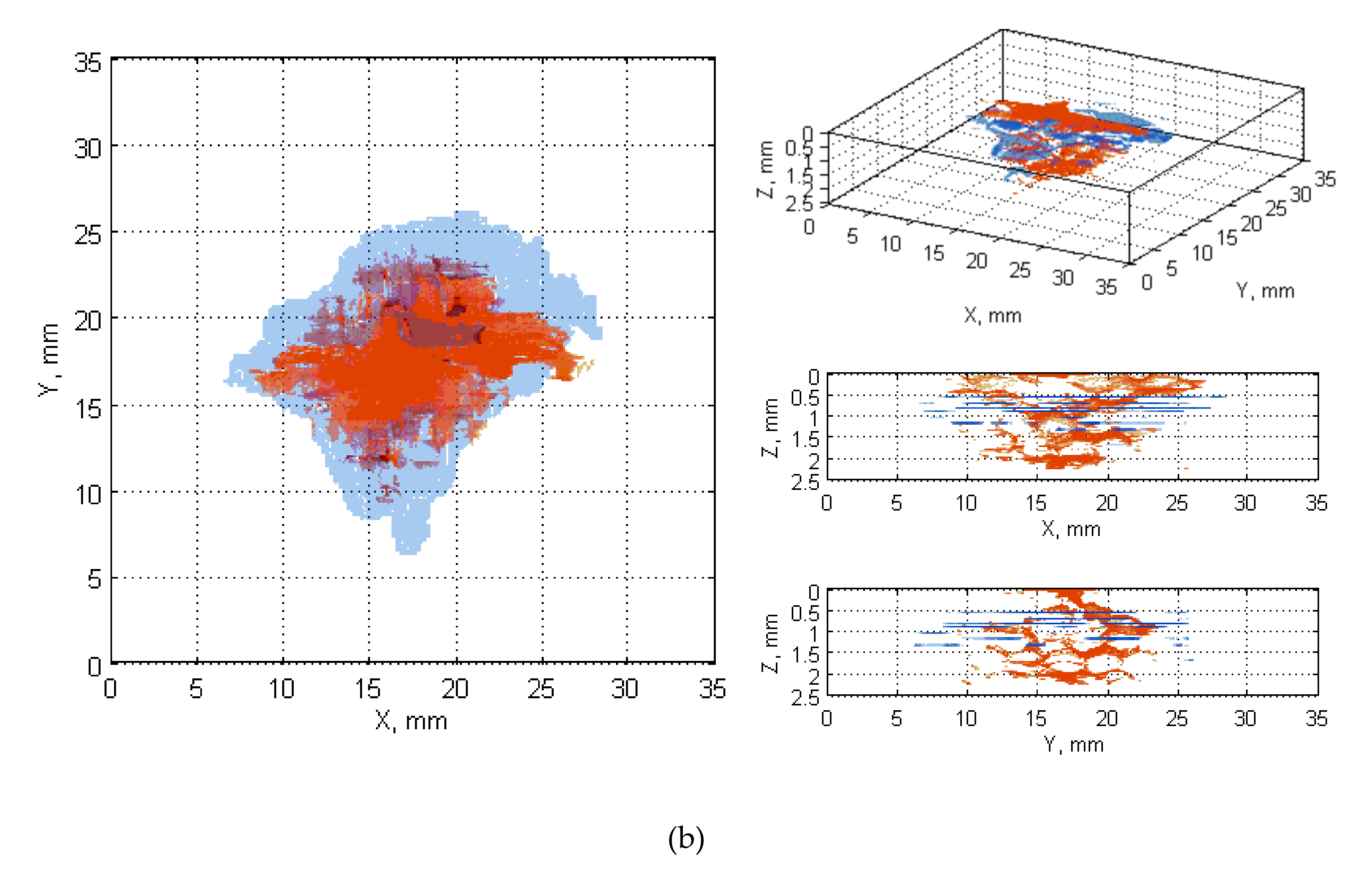
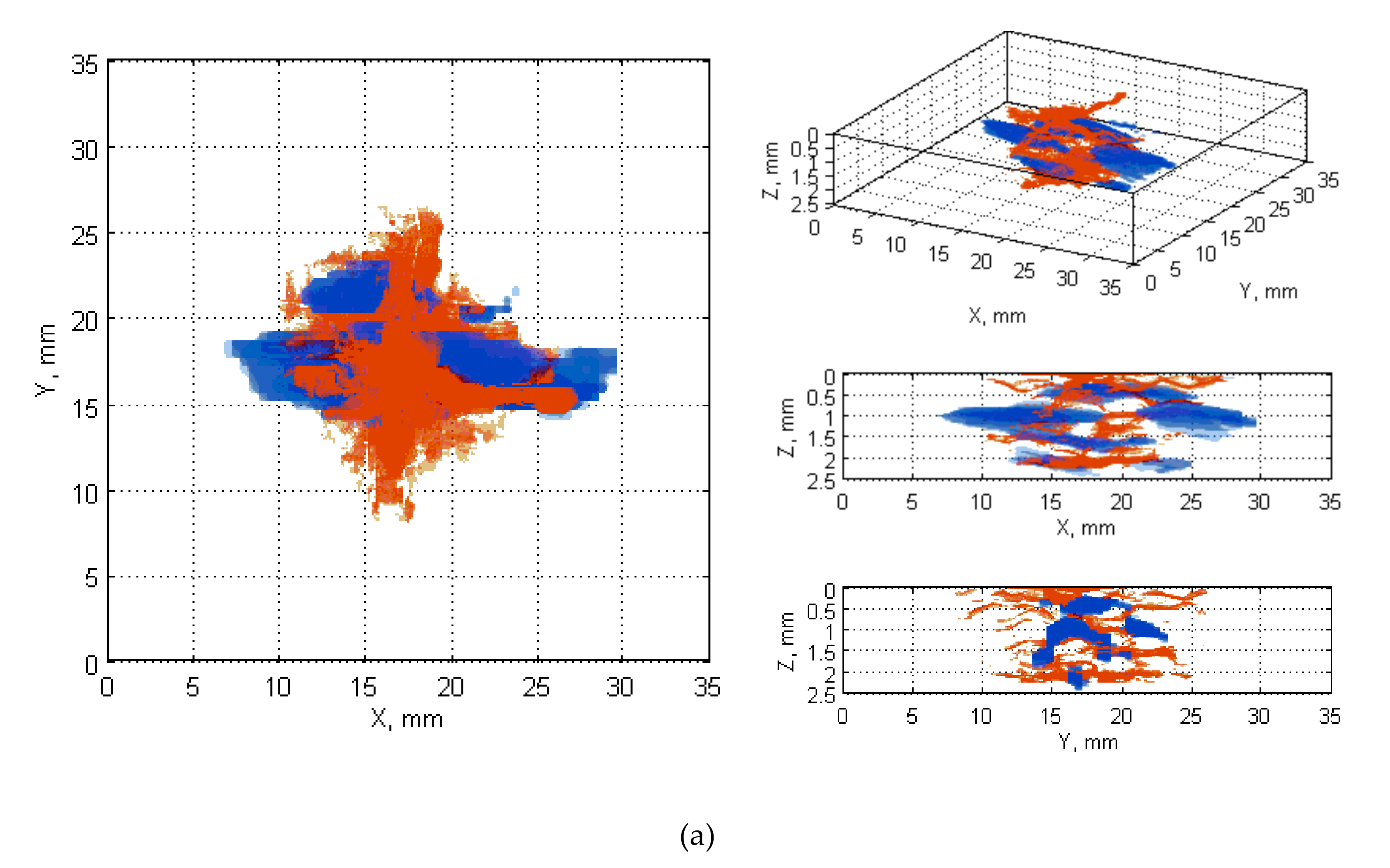

References
- Ushakov, A.; Stewart, A.; Mishulin, I.; Pankov, A. Probabilistic Design of Damage Tolerant Composite Aircraft Structures; U.S. Department of Transportation: Washington, WA, USA, 2002. [Google Scholar]
- Razi, H.; Ward, S. Principles for achieving damage tolerant primary composite aircraft structures. In Proceedings of the 11th DoD/FAA/NASA Conference on Fibrous Composites in Structural Design, Fort Worth, TX, USA, 26–29 August 1996. [Google Scholar]
- Zhang, Z.Y.; Richardson, M.O.W. Low velocity impact induced damage evaluation and its effect on the residual flexural properties of pultruded GRP composites. Compos. Struct. 2007, 81, 195–201. [Google Scholar] [CrossRef]
- Davies, G.A.O.; Zhang, X. Impact damage prediction in carbon composite structures. Int. J. Impact Eng. 1995, 16, 149–170. [Google Scholar] [CrossRef]
- Adams, R.R.; Cawley, P. A review of defect types and nondestructive testing techniques for composites and bonded joints. NDT Int. 1988, 21, 208–222. [Google Scholar]
- Hsu, D.K.; Barnard, D.J.; Peters, J.J.; Dayal, V. Physical basis of tap test as a quantitative imaging tool for composite structures on aircraft. AIP Conf. Proc. 2000, 509, 1857. [Google Scholar]
- Cawley, P.; Woolfrey, A.M.; Adams, R.D. Natural frequency measurements for production quality control of fibre composites. Composites 1985, 16, 23–27. [Google Scholar] [CrossRef]
- Hagemaier, D.; McFaul, H.; Moon, D. Nondestructive Testing of Graphite Fiber Composite Structures; SAE Technical Paper 700750; SAE International: Los Angeles, CA, USA, 1970. [Google Scholar]
- Resnyansky, A.D. The Impact Response of Composite Materials Involved in Helicopter Vulnerability Assessment: Literature Review—Part 1; DSTO-TR-1842 Part 1 and 2; DSTO Defense Science and Technology Organisation: Edinburgh, Australia, 2006. [Google Scholar]
- Miller, T.C.; Lasse, B.; van der Heiden, B. Composite Damage Detection Using a Novel Ultrasonic Method; Final Report AFRL-PR-ED-TP-2003-2003-015; Air Force Research Laboratory: Edwards, CA, USA, 2003. [Google Scholar]
- Rose, J.L.; Hay, T. Skin to Honeycomb Core Delamination Detection with Guided Waves. In Proceedings of the 15th World Conference on Nondestructive Testing, Rome, Italy, 15–21 October 2000. [Google Scholar]
- Prosser, W.H. Stress dependence of ultrasonic velocity in unidirectional graphite/epoxy composites for longitudinal waves propagating along the direction of stress. In Review of Progress in Quantitative Nondestructive Evaluation; Thompson, D.O., Chimenti, D.E., Eds.; Springer: Boston, MA, USA, 1990; pp. 1701–1707. [Google Scholar]
- Dokun, O.D.; Jacobs, L.J.; Haj-Ali, R.M. Ultrasonic monitoring of material degradation in FRP composites. J. Eng. Mech. 2000, 126, 704–710. [Google Scholar] [CrossRef]
- Dominiguez, N.; Mascaro, B. Ultrasonic non-destructive inspection of localized porosity in composite materials. In Proceedings of the 9th European Conference on NDT, Berlin, Germany, 25–29 September 2006. [Google Scholar]
- Stone, D.E.W.; Clarke, B. Ultrasonic attenuation as a measure of void content in carbon-fibre reinforced plastics. Non Destruct. Test. 1975, 8, 137–145. [Google Scholar] [CrossRef]
- Smith, R.A.; Clarke, B. Ultrasonic C-scan determination of ply stacking sequence in carbon-fibre composites. Insight 1994, 36, 714–747. [Google Scholar]
- Potter, R.T. The significance of defects and damage in composite structures. AGARD Conf. Proc. 1983, 355, 17. [Google Scholar]
- Leong, H.; Hsu, D.K. Experimental analysis of porosity-induced ultrasonic attenuation and velocity change in carbon composites. Ultrasonics 1995, 33, 195–203. [Google Scholar]
- Capriotti, R.; Dati, E.; Silvestri, P.; Trivisonno, G. NDT techniques for the evaluation of impact damage on aeronautical structures. In Proceedings of the 15th World Conference on Nondestructive Testing, Rome, Italy, 15–21 October 2000. [Google Scholar]
- La Riviere, S.G. Introduction to NDT of Composites; Boeing Commercial Aircraft, Manufacturing, Research and Development: Seattle, WA, USA, 2007. [Google Scholar]
- Feng, D.; Aymerich, F. Damage prediction in composite sandwich panels subjected to low-velocity impact. Compos. Part A: Appl. Sci. Manuf. 2013, 52, 12–22. [Google Scholar] [CrossRef]
- Cuadra, J.; Vanniamparambil, P.A.; Hazeli, K.; Bartoli, I.; Kontsos, A. Damage quantification in polymer composites using a hybrid NDT approach. Compos. Sci. Technol. 2013, 83, 11–21. [Google Scholar] [CrossRef]
- Daryabor, P.; Safizadeh, M.S. Image fusion of ultrasonic and thermographic inspection of carbon/epoxy patches bonded to an aluminum plate. NDT E Int. 2017, 90, 1–10. [Google Scholar] [CrossRef]
- Yuan, Y.; Wang, S. Measurement of the energy release rate of compressive failure in composites by combining infrared thermography and digital image correlation. Compos. Part A: Appl. Sci. Manuf. 2019, 122, 59–66. [Google Scholar] [CrossRef]
- Xiao, X.; Gao, B.; Tian, G.Y.; Wang, K.Q. Fusion model of inductive thermography and ultrasound for nondestructive testing. Infrared Phys. Technol. 2019, 101, 162–170. [Google Scholar] [CrossRef]
- De Oliveira, B.C.F.; Nienheysen, P.; Baldo, C.R.; Gonçalves, A.A., Jr.; Schmitt, R.H. Improved impact damage characterisation in CFRP samples using the fusion of optical lock-in thermography and optical square-pulse shearography images. NDT E Int. 2020, 111, 102215. [Google Scholar] [CrossRef]
- Kohl, C.; Streicher, D. Results of reconstructed and fused NDT-data measured in the laboratory and on-site at bridges. Cement Concrete Compos. 2006, 28, 402–413. [Google Scholar] [CrossRef]
- Villain, G.; Sbartaï, Z.-M.; Dérobert, X.; Garnier, V.; Balayssac, J.-P. Durability diagnosis of a concrete structure in a tidal zone by combining NDT methods: Laboratory tests and case study. Constr. Build. Mater. 2012, 37, 893–903. [Google Scholar] [CrossRef]
- Sbartaï, Z.-M.; Breysse, D.; Larget, M.; Balayssac, J.-P. Combining NDT techniques for improved evaluation of concrete properties. Cement Concrete Compos. 2012, 34, 725–733. [Google Scholar] [CrossRef]
- Wronkowicz, A.; Dragan, K.; Lis, K. Assessment of uncertainty in damage evaluation by ultrasonic testing of composite structures. Compos. Struct. 2018, 203, 71–84. [Google Scholar] [CrossRef]
- Katunin, A.; Sznura, M. Experimental test rig for the controlled impact tests of composite plates (in Polish). Apar. Bad. Dydakt. 2013, 18, 297–302. [Google Scholar]
- Baaran, J. Visual Inspection of Composite Structures; Final Report, No.EASA_REP_RESEA_2007_3; Institute of Composite Structures and Adaptive Systems, DLR Braunschweig: Braunschweig, Germany, 2009. [Google Scholar]
- Wronkowicz-Katunin, A.; Katunin, A.; Dragan, K. Reconstruction of barely visible impact damage in composite structures based on non-destructive evaluation results. Sensors 2019, 19, 4629. [Google Scholar] [CrossRef] [PubMed] [Green Version]
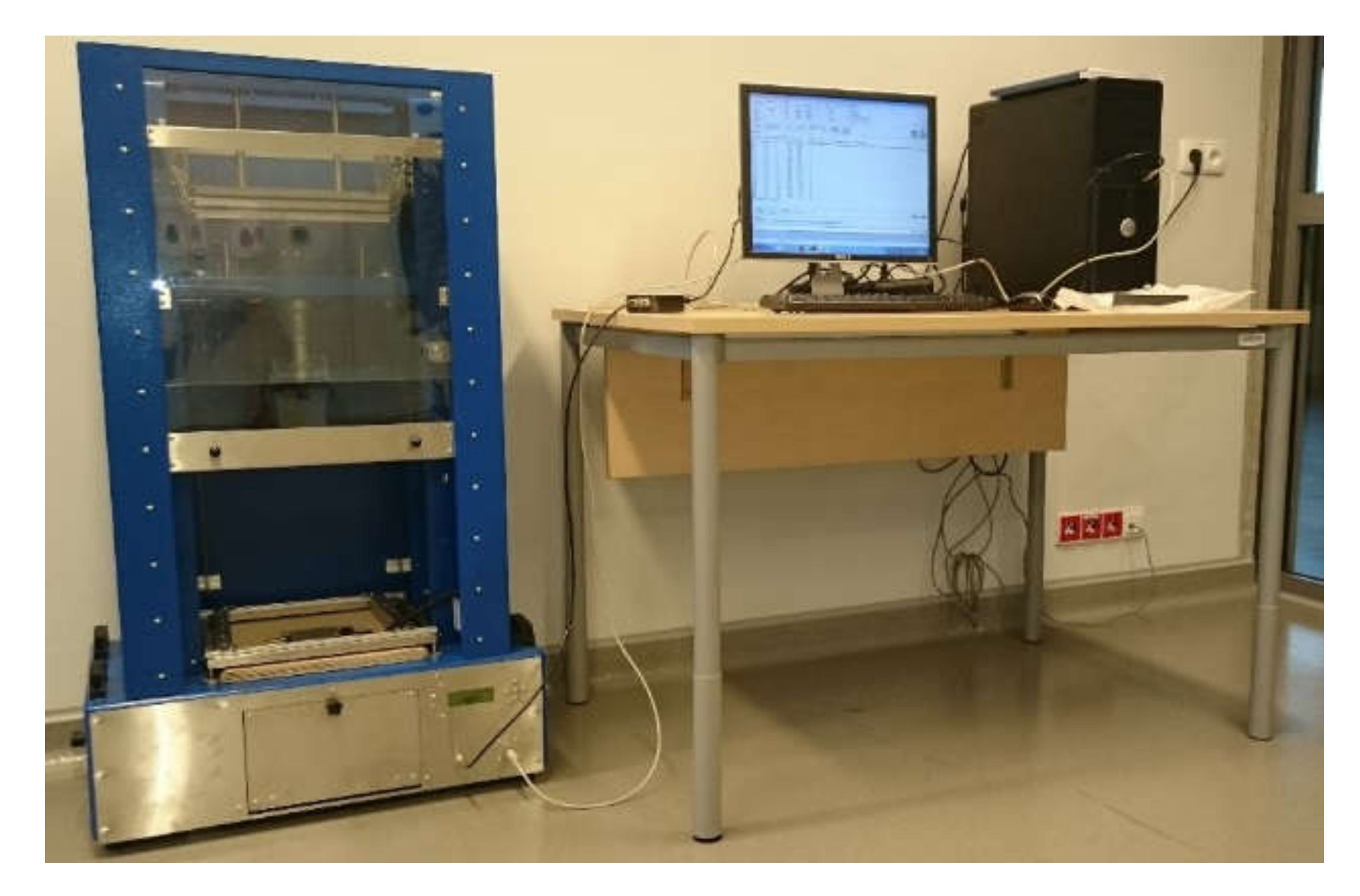
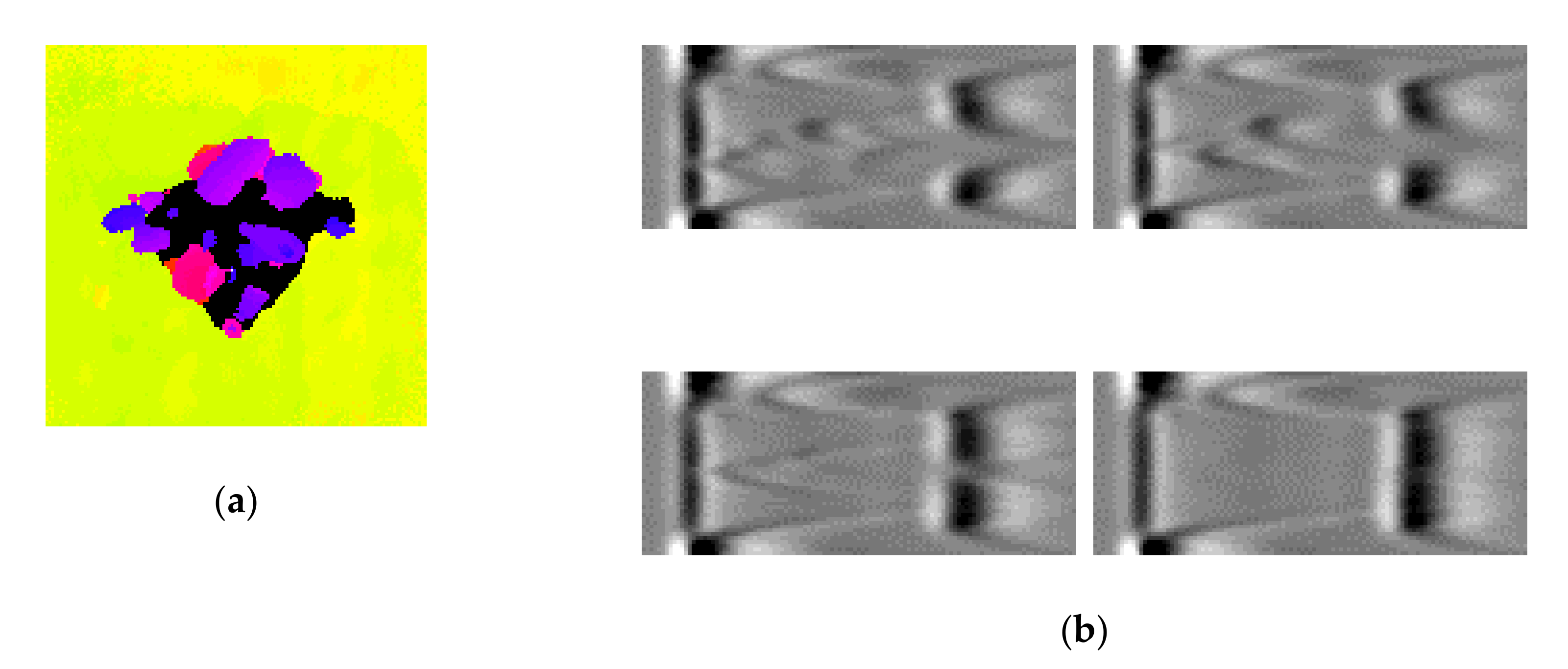
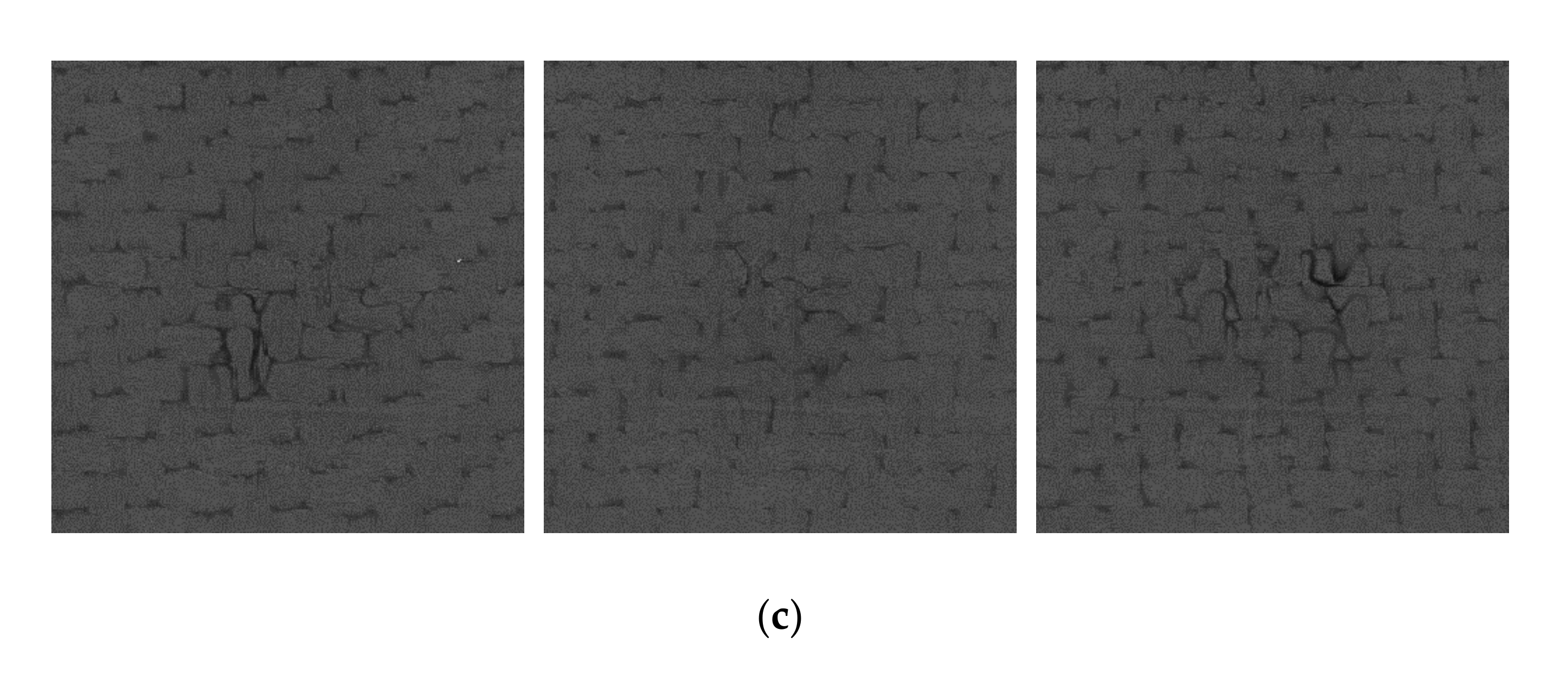


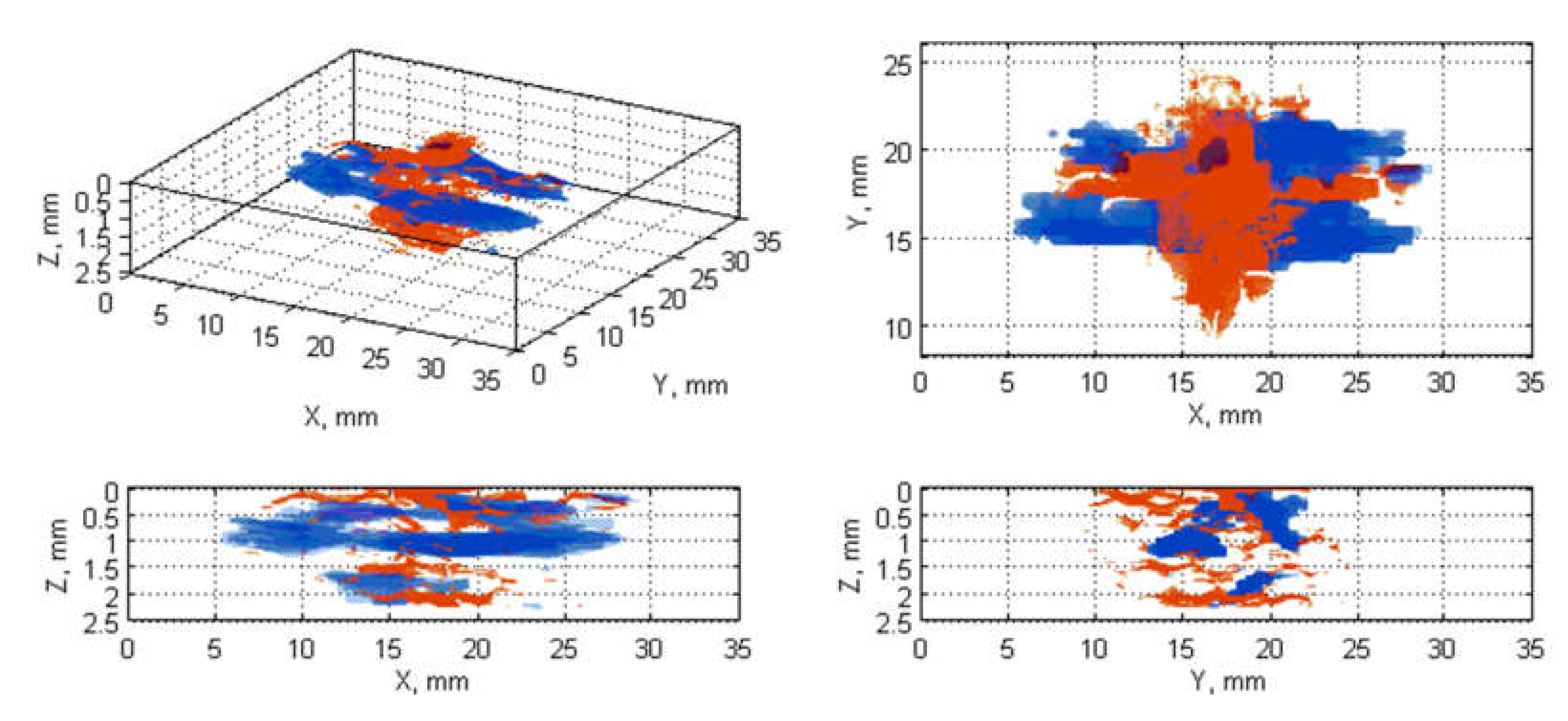

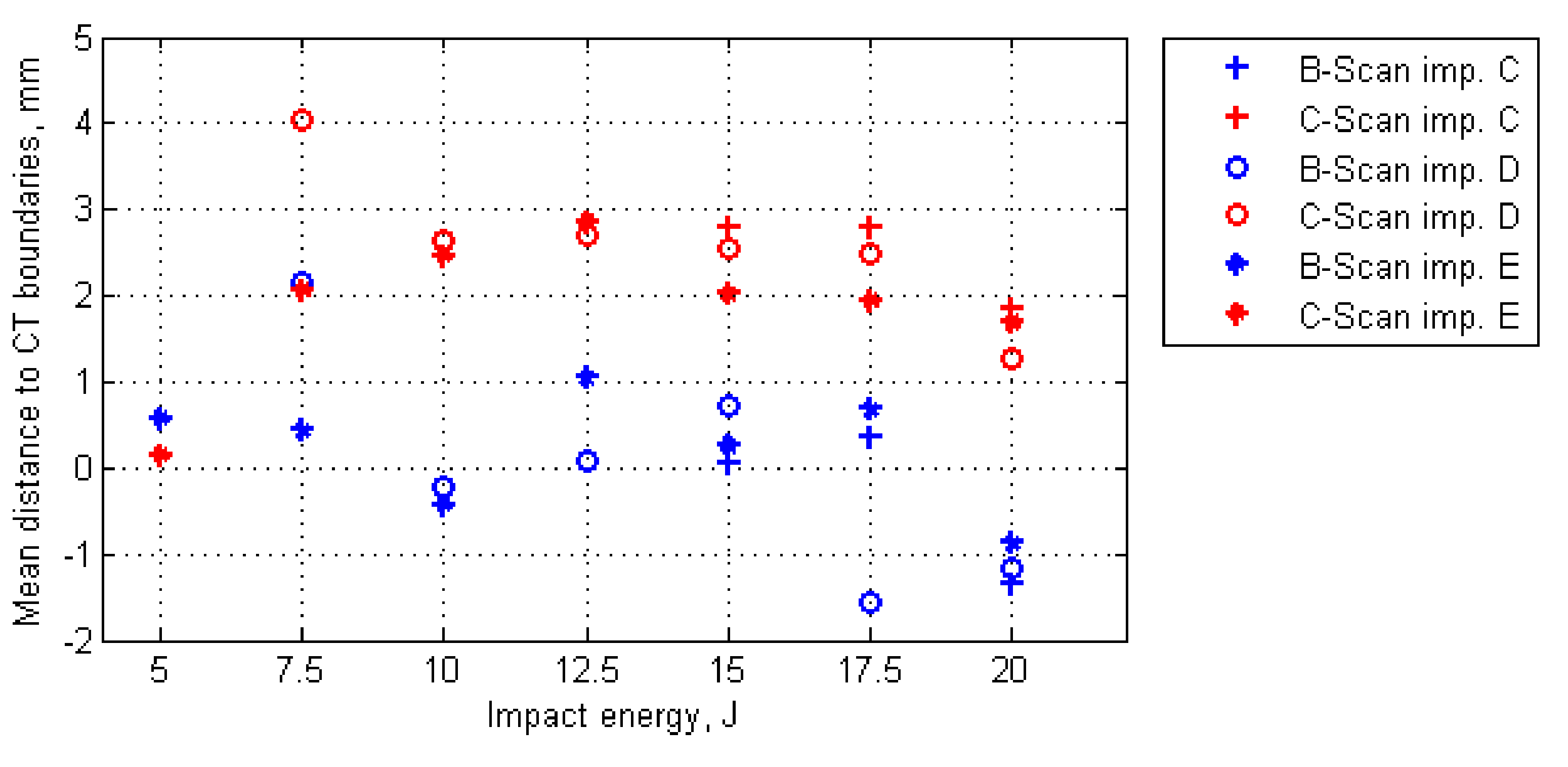
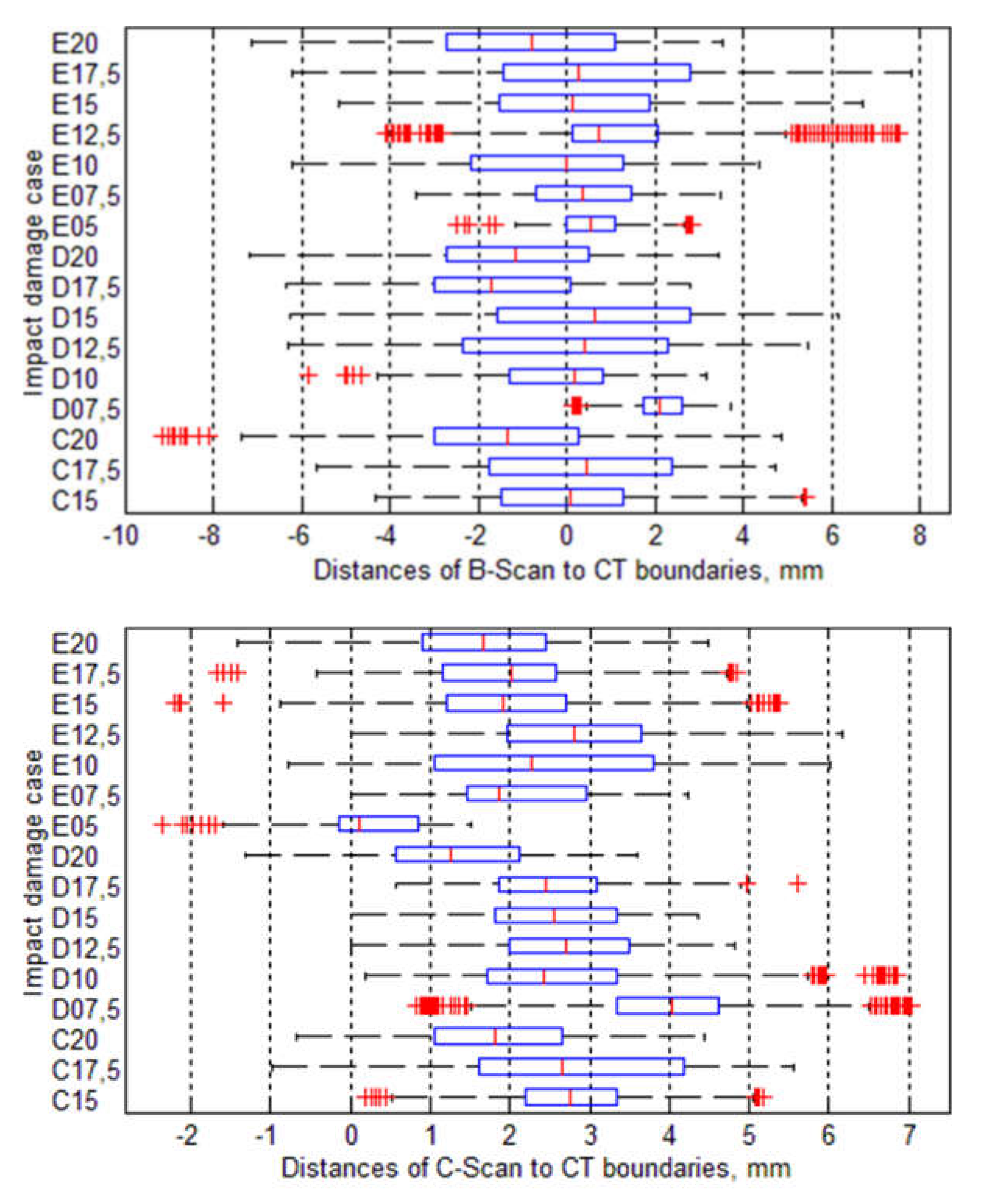
© 2020 by the authors. Licensee MDPI, Basel, Switzerland. This article is an open access article distributed under the terms and conditions of the Creative Commons Attribution (CC BY) license (http://creativecommons.org/licenses/by/4.0/).
Share and Cite
Katunin, A.; Wronkowicz-Katunin, A.; Dragan, K. Impact Damage Evaluation in Composite Structures Based on Fusion of Results of Ultrasonic Testing and X-ray Computed Tomography. Sensors 2020, 20, 1867. https://doi.org/10.3390/s20071867
Katunin A, Wronkowicz-Katunin A, Dragan K. Impact Damage Evaluation in Composite Structures Based on Fusion of Results of Ultrasonic Testing and X-ray Computed Tomography. Sensors. 2020; 20(7):1867. https://doi.org/10.3390/s20071867
Chicago/Turabian StyleKatunin, Andrzej, Angelika Wronkowicz-Katunin, and Krzysztof Dragan. 2020. "Impact Damage Evaluation in Composite Structures Based on Fusion of Results of Ultrasonic Testing and X-ray Computed Tomography" Sensors 20, no. 7: 1867. https://doi.org/10.3390/s20071867
APA StyleKatunin, A., Wronkowicz-Katunin, A., & Dragan, K. (2020). Impact Damage Evaluation in Composite Structures Based on Fusion of Results of Ultrasonic Testing and X-ray Computed Tomography. Sensors, 20(7), 1867. https://doi.org/10.3390/s20071867





